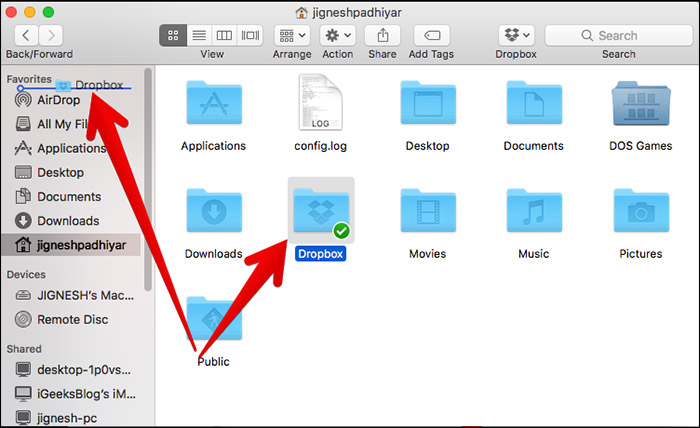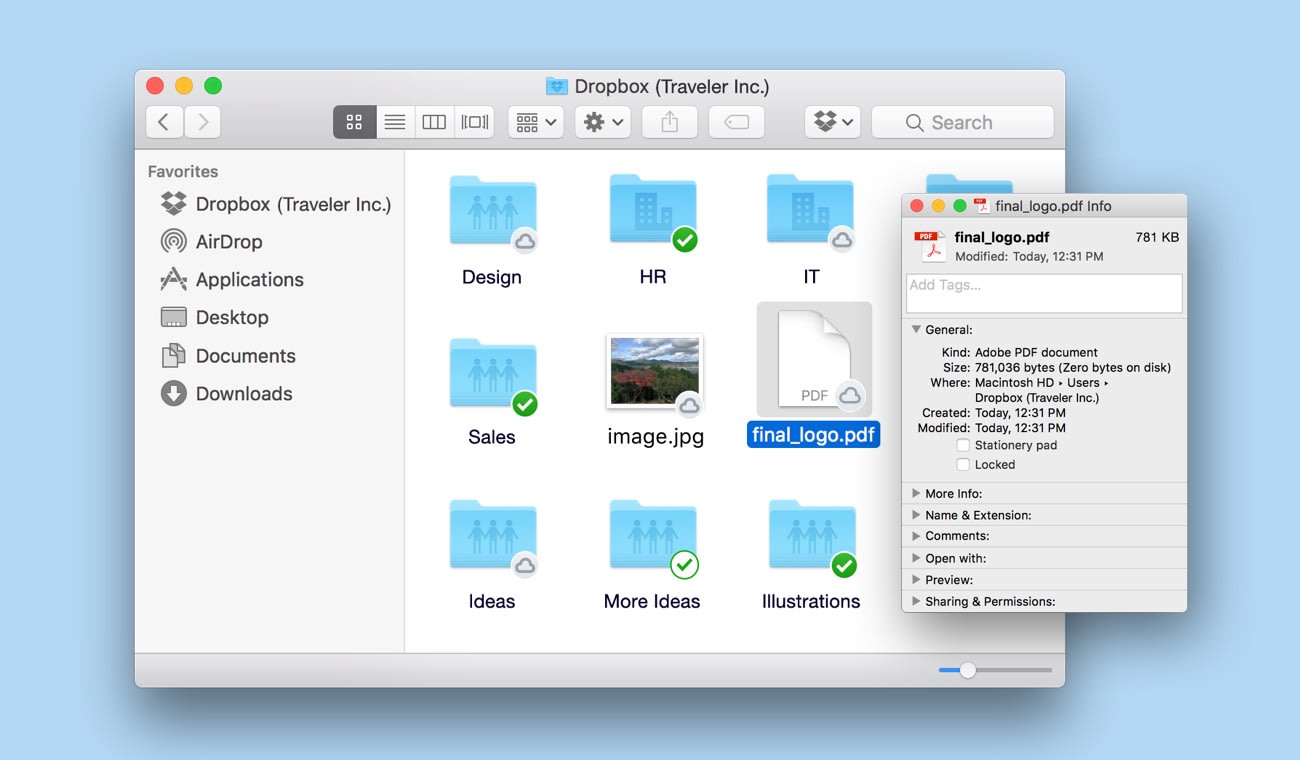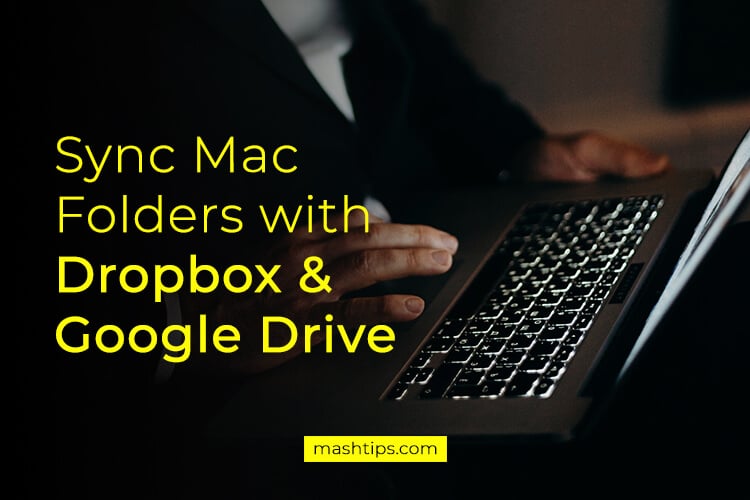Expand cloud storage on Mac
Folders having a check mark with them will be sync to your device. If you don’t need any of it to be synced, simply uncheck it. Dropbox Sync for Mac. Mac users follow the steps mentioned below. Step 1: From the System Tray click on the DropBox icon. Step 2: Click the Gear icon and from the menu select Preferences. Step 3: Click on the tab Account. Accessibility for Dropbox Accessibility is an Apple setting that allows Mac notifications to interact with other apps. Find out about Dropbox and Add Dropbox to the Files app on your Chromebook Access your Dropbox account in the Google Files app to browse files stored on your Chromebook and your Dropbox.
A number one cloud-based storage system today, Dropbox essentially made storing data online mainstream. This app simplifies syncing files across different devices and offers an easy way to share photos, folders, or send large files (i.e. too large for emails) to others. Although Dropbox isn’t the only cloud-based storage and syncing service for Mac, it remains extremely popular.
Even though, as a Mac user, you do already have iCloud storage and syncing service right at your fingertips, integrated with your Mac and other iOS devices, there are still reasons for you to download Dropbox for Mac.
Get Setapp for seamless storage control
No matter where you keep your precious files, Setapp apps will help you make storage management easy. A single toolkit for everything.

Dropbox makes it easy to share whatever it contains, by offering advanced features such as shared folders or the ability to copy a Dropbox link to allow someone to download a file from your folder. Besides, Dropbox is one of the more common cloud services used by third-party productivity apps that could offer you great additional features.
Despite iCloud and Dropbox both having basic cloud storage functionality, there are quite a few differences in what you can expect from each. You can’t easily share with iCloud, as its associated solely with a given Apple ID, while Dropbox lets you share folder contents with others, constantly syncing among those connected to the folder. On the other hand, don’t expect Dropbox to automatically sync your data like photos or contacts like iCloud does. You only get quick access to what you put inside your Dropbox folder.
How To Sync Dropbox On Mac Easily
While you can always access your data from the Dropbox website, in the long run, it's easier to install the Dropbox desktop app. Using the Dropbox desktop app means you won't have to manually upload or download files in your Dropbox folder and any time you make a change to a file and are connected to the internet that change will sync everywhere you have Dropbox installed. Dropbox app for Mac works even when you're offline — just like an ordinary folder.
How to install the Dropbox app for Mac?
To download Dropbox for Mac, look for the Dropbox installer on dropbox.com. Once the download of the Dropbox installer is complete, you should be able to find it (DropboxInstaller.dmg) in your Mac’s Downloads folder. Open the file to start your Dropbox download app:
Double-click on the Dropbox icon in the installer window
A warning sign will appear cautioning that Dropbox is an application you downloaded from the internet ➙ click Open to start the installation process
Once the basic installation is complete, Dropbox will ask you to sign in. If you don’t already have an existing Dropbox account, use the sign-up link near the bottom-right corner of the window and follow the online instructions to set up your Dropbox account.
If all done right, after you sign in to your Dropbox on Mac, you’ll see a congratulations message for successfully completing the installation. Well done!
Now on to your Dropbox folder. To set it up:
Click Open My Dropbox Folder button in the final installer window
Enter your Dropbox password ➙ then click OK
Dropbox will add itself to your Finder’s sidebar and deposit a Dropbox for Mac tutorial into your Dropbox folder (a Get Started with Dropbox .pdf file). Take a few moments to read through the guide — it provides a good outline for working with Dropbox.
Tips for using Dropbox on Mac
Understanding how does Dropbox work is easy. Once you install the Dropbox desktop app and set up your Dropbox account, it’ll appear on your computer as a special Dropbox folder, which will become the heart of how does Dropbox work. Anything you place inside that folder is automatically copied to the cloud and synced with your other devices that run Dropbox. Note that Dropbox might not automatically copy all the files on your computer (e.g. when you don’t have enough space) — you might have to pick and choose which ones you want to save.
Transferring files to the Dropbox folder is a matter of seconds. First Dropbox will show a blue icon with circling arrows in the lower left — this means copying the file and uploading it to the cloud. Once it’s done, the icon will turn green and display a check mark. If you wish to transfer multiple files at once:

Hold ⌘ and click on each file you want to move
Drag one of the files to move all selected ones into the Dropbox folder
What you don’t have to worry about is how to sync Dropbox. Dropbox for Mac automatically saves all data placed inside the folder across all devices. As long as you can access your account, you can download any file stored in your Dropbox folder on your local machine. For example, you can move pictures you took on your phone to Dropbox and look at them on your Mac in seconds.
One of Dropbox’s strongest features you should definitely benefit from is sharing files with colleagues and family members. To designate files for sharing:
Dropbox For Mac Sync Software
Right-click on the item you wish to share in your Dropbox
Select the option that says “Share…” with a Dropbox icon next to it
In the text field below the question “Who do you want to share with?”, type the email addresses of the people with whom you want to share the file
Grant the permission you want, either view only or with the ability to edit the file
Once done, you’ll be able to write a message for the recipient(s) if you want to do so. You can also create a link to send to people yourself if you don’t want Dropbox to send the link by email.
Using Dropbox on Mac as pure cloud storage is popular too, as it helps you keep backup copies of important files safe and ready to restore should need be.
What is Dropbox pricing?
Dropbox is available in four pricing plans: the first three let you expand the amount of storage you have by referring others to the service. For example, the basic free version of Dropbox will give you 500 MB per referral, expanding the initial 2 GB to a possible maximum of 18 GB of free storage. A Plus plan for $9.99 per month will give you 1 TB of storage space.
More than just Dropbox app for Mac
Having been one of the best choices for cloud file storage for a long time, more and more often Dropbox isn’t the only one in the cloud services portfolio for many people. For personal and professional data storage needs, more than one service is frequently used.
Why? A combination of cloud-based storages increases your Mac’s disk space to virtually unlimited, as long as you have an active internet connection. Unfortunately, it also turns managing different cloud accounts into quite a hustle.
Use CloudMounter to keep every storage in one place
Forget the trouble of switching across your cloud storage accounts. CloudMounter enables you to access it all from one app.
Luckily, there are apps like CloudMounter that allow you to use all your storage solutions in one place. CloudMounter connects your cloud storage providers to your Mac as if they were your external drives. This lets you treat cloud data just like local files and even move documents between the different clouds.
Another benefit of using CloudMounter is its latest encryption algorithm that guarantees the security of your cloud files. Plus it allows encrypting sensitive data on the cloud and doesn’t share your login info with third parties. The app works perfectly with all major cloud services and could become your ultimate cloud manager if you’re constantly dealing with several cloud services or feel there’s not enough free space on your Mac’s SSD.
Even better, you could match amazing cloud-storage opportunities with clever productivity apps. One such example that uses Dropbox to sync your work files across all devices is Unclutter.
Unclutter does wonders for those of us with busy clipboard lives: when you often have to copy several things at once and be able to paste each of them multiple times. Instead of creating temporary work folders and flood your desktop with files, opt for Unclutter’s drag-and-drop area that keeps your desktop clean and all your files, links, and notes at your fingertips.
Dropbox For Mac Sync Apps
Even more, Unclutter keeps track of everything you copy to your Mac’s clipboard even after the system was rebooted, lets you create separate lists to save particular clips for future use, has a memo assistant to remind you of things you don’t want to miss, and can have all the different files ready for you every time you open your Mac. And you’ve guessed it right, all the content is auto-synced across all your Dropbox-connected devices!
Best of all, you can find CloudMounter and Unclutter mentioned above on a free trial through Setapp, a platform of more than 150 useful Mac apps and tools that will completely overhaul the way you interact with your computer. So you decided how to use Dropbox on Mac yet?
Meantime, prepare for all the awesome things you can do with Setapp.
Read onSign Up
If you're not already familiar with file syncing service Dropbox, you should be. The easiest way to describe Dropbox is that it acts as a type of online storage that gives you access to your files wherever you go, no matter which computer you're on, what OS you're using, and where you are in the world. No need to use a DVD, USB drive, or e-mail to transfer important files. However, Dropbox is really much more than that: you can access and work on files even when you're offline, share folders with friends and coworkers, and most importantly (for this writeup, anyway), sync settings for numerous applications without having to fork over any cash.
Why is this good? If there are multiple computers in your life—like a work machine and a home machine, or a desktop and a laptop, or all of the above—you probably use many of the same programs. Some of those programs might have their own built-in syncing services to keep things like your bookmarks or passwords up-to-date, but many do not. That's where Dropbox comes in—the free account offers 2GB of space (up to 100GB for paying customers) for you to do whatever you please. And since we like telling you how we use things, here are a few of our favorite Dropbox uses.
Sync your 1Password database
Dropbox For Mac Free
1Password is a password manager and auto-form-filler for the Mac that has been a hit among the Ars staff and readers alike. It's much more secure than the built-in OS X Keychain and lets you store tons of data, including credit cards, frequent flyer miles, addresses, phone numbers—you name it, 1Password can store it. Then, with a simple keyboard command in most major browsers (command+ ), you can instantly log into any website or fill out any form without having to remember thousands of data snippets.
One problem some of us began running into when we started using 1Password, though, was the fact that it lets you create very complex passwords and store them without memorizing them. This means that when you're using another computer, you're a little bit screwed if you want to, say, log into your bank's website from your laptop when you created a 15-character hexadecimal password through 1Password at home. This is where Dropbox comes in—you can sync your 1Password database across multiple computers so that you always have access to it and can always save to it, no matter what computer you're using.
In order to do this, you must first have the latest version of 1Password installed on all your Macs (make sure you have the licenses to do this, of course!). Make sure you have Agile Keychain enabled (as opposed to 'OS X Keychain Format') by going into the 1Password Preferences > Keychain tab—Agile Keychain has enabled by default for some time now, so you shouldn't have to do anything here if you're running the latest software. Then, change the location where your 1Password database is syncing from somewhere on your hard drive to your Dropbox folder by clicking the 'More...' button underneath the location path.
Once you save it to a Dropbox path, you can navigate to it using the same method on your other computer and choose the 1Password file you have saved in Dropbox. Voila! You are now synced over Dropbox.
Dropbox For Mac Sync Software
Sync MacJournal entries
MacJournal is a journaling/blog software package that has gained popularity thanks to its easy-to-use interface and relatively clean HTML output, something that is important to us here at Ars. I like to compose my articles in MacJournal and then copy the HTML over to paste into our CMS (unfortunately, our CMS still leaves something to be desired when it comes to hooking up third-party software to save directly into it). I use a desktop machine as my main computer when I write, but I also travel and move around the house/city a lot on my laptop. This is inconvenient when I have a half-finished article saved in MacJournal at home and need to pick up where I left off while I'm on the road.

Again, Dropbox comes to the rescue by allowing me to sync my article database and access it from both of my machines. Once again, you must make sure to have the software installed on the computers you plan to use. Navigate on your computer to your home folder > Library > Application Support > MacJournal, and make a copy of your 'MacJournal Data' file on your Dropbox folder. Then on the computers you plan to sync, go into the MacJournal preferences > Advanced. In the drop-down where it says 'Open documents,' pull down to 'Open other.'
Here, you will be able to navigate to your Dropbox folder and select the file you want to use. Do this on both computers so you're working off the same file.
The one downside to this method is that you must make sure to quit MacJournal every time you're done using it from either machine. If you don't do this, your entries may not be properly synced when you switch to the other computer, though I've had some mixed luck with this. If you make sure to quit every time you walk away to switch machines, though, you should be golden.
Sync Yojimbo
Yojimbo is a popular 'information organizer' for the Mac that lets you keep track of all manner of information, from serial numbers and bookmarks to images and notes—and everything in between. Once again, you might find yourself hooked on using Yojimbo to keep track of your life, only to realize that you need some of that information while you're away from the computer that you saved it on. Yojimbo has built-in syncing over MobileMe, but if you're not keen on giving Apple $99 every year, you can easily set up Yojimbo to sync over Dropbox for free.

A method posted to the Yojimbo Talk mailing list was suggested by some of our readers, but don't worry if you don't speak Terminal-ese. The basic gist is to quit the app, make a copy of your Yojimbo library for backup, and turn off MobileMe syncing within Yojimbo on all computers involved. Then, just like in our MacJournal example, go into your home folder > Library > Application Support and move the entire Yojimbo folder over to your Dropbox directory. Once you do that, make an alias of the Yojimbo folder, now located on Dropbox, and put it back into your Application Support folder (make sure to remove the 'alias' part of the folder name).
Once you confirm that Yojimbo is working and able to read your library from Dropbox, quit the app and perform the same steps on your other computer to create an alias from the Dropbox folder of your Yojimbo library. Open up Yojimbo to make sure it's reading from the right place, and you're good to go.
Network share for the virtual office

We realize that this one is an odd fit for this article since it's about syncing all manner of files instead of just settings, but since this is one of the main ways we use Dropbox here at the Orbiting HQ, we wanted to share it. At most IT-related jobs, there's a network share or five that can be accessed by all employees who need to share files—Photoshop files, supporting materials, PowerPoint presentations, spreadsheets, etc. But as more and more people start working from home, the idea of the network share is sort of disappearing, along with its helpful functionality.
Not so with Dropbox! Since you can share whole folders with other people, you can designate a specific Dropbox folder to act as your network share for the virtual office. For example, when I'm in San Francisco or Cupertino covering an Apple event, I have a script that automatically saves the pictures from my camera into a shared Dropbox folder. Then, someone on the other side who has access to that folder gets Growl notifications when new photos are added, allowing that person to choose the right photos to drop into our liveblog. It's like having a whole team there without all the travel costs!
In order to do this, you must create a new directory in your Dropbox and then go to the website to share it with others. You can either create and share a folder all at once (click the 'Share a folder' button), or you can share an existing folder.
From there, you can add collaborators by entering their e-mail addresses and a custom message if you prefer. If your collaborators are also using Dropbox, all they have to do is click the link in the invitation e-mail and your shared folder will show up in their Dropbox (if they're not using Dropbox, they are prompted to sign up for a free account). Even if you use the wrong e-mail and it goes to an account that your friend or coworker doesn't use with Dropbox, the site will let that person use an existing login to access your folder.
Turn your iPhone into an e-book reader
Sure, there are a handful of ways to read e-books on your iPhone, but not every one is ideal. The Kindle app only works for people who have Kindle/Amazon accounts, and the Kindle-compatible book selection at Amazon is limited. Sending e-mails to yourself with PDFs attached works, until you forget to send that e-mail. But if you sync your e-book (or really any) PDFs to a folder on Dropbox, you can use the free Dropbox app on the iPhone or iPod touch to access them anytime.
One way to do this automatically without requiring you to futz around with files is to set up a Hazel rule to automatically transfer all PDFs to a certain directory within Dropbox. Then, just pop open the app and navigate to that folder to read all the PDFs and e-books you want—no e-mailing or Kindling required.
What do you like to sync?
Do you have any unique uses for Dropbox that we haven't thought of? There are millions of things to sync across computers—bookmarks, AIM logs, fonts—and we want to know what you use it for most often.
